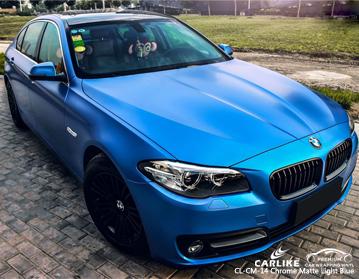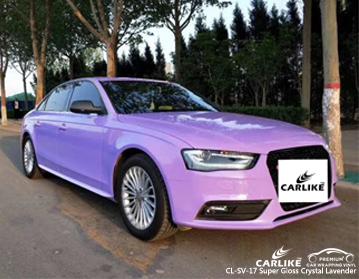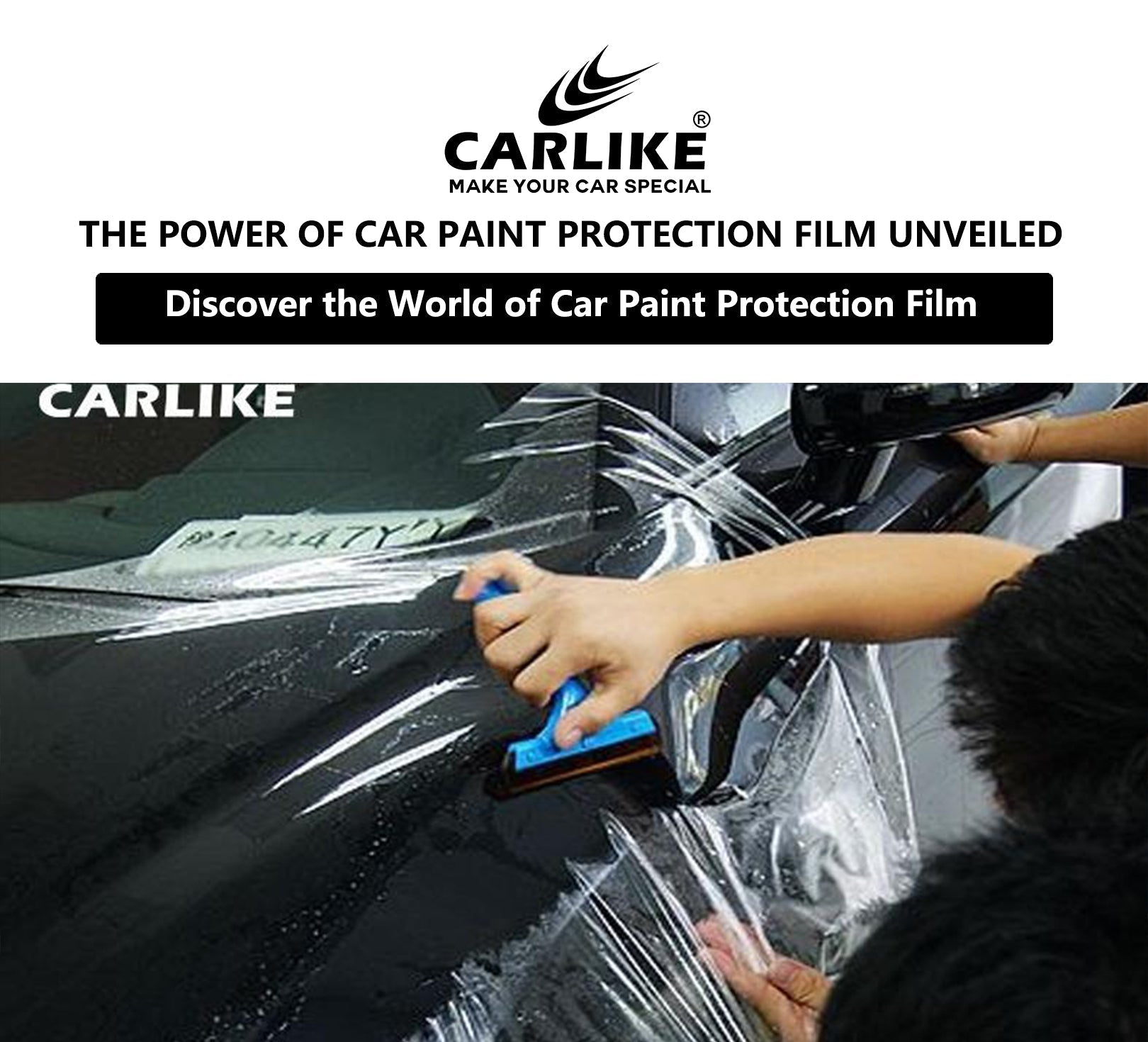Are you facing difficulties in removing vinyl wrap from your car? Don't worry, you're not alone. Removing vinyl wrap can be a challenging task, but with the right guidance, you can tackle it like a pro.
In this comprehensive guide, we'll walk you through everything you need to know to make the process smoother and more manageable.
From essential tools to step-by-step techniques, consider this your go-to resource for mastering the art of vinyl wrap removal. Say goodbye to struggles and hello to a pristine car surface – let's dive in!
1. Preparation
Here's an introduction to the necessary tools and materials for removing vinyl wrap from a car, along with a checklist for readers to prepare before starting the work:
Checklist
Before starting the vinyl wrap removal process, it's important to gather all the necessary tools and materials and ensure you're prepared for the job. Here's a checklist to help you get organized:
1. Heat Gun or Hair Dryer: Ensure it's in working condition and ready to use.
2. Scraper or Plastic Razor Blade: Check for any damage or dullness and have a spare blade on hand if needed.
3. Car Cleaner or Isopropyl Alcohol: Make sure you have enough cleaner or alcohol to thoroughly clean the car's surface.
4. Microfiber Cloths: Have several clean cloths available for wiping down the car.
5. Adhesive Remover: If you're using one, ensure you have enough for the job.
6. Gloves and Protective Eyewear: Put on gloves and eyewear to protect yourself during the removal process.
7. Work Area Preparation: Clear the area around the car to provide ample space for work and ensure good ventilation if using chemicals.
8. Safety Precautions: Review safety guidelines and precautions for using the heat gun and adhesive remover.
9. Plan for Disposal: Have a plan for disposing of the removed vinyl wrap and any chemical waste responsibly.
By following this checklist and ensuring you have all the necessary tools and materials, you'll be well-prepared to start removing the vinyl wrap from your car efficiently and safely.
2. Step-by-Step Guide
Here's a detailed guide on how to remove vinyl wrap from a car, including prepping, starting, removing the wrap, and dealing with stubborn areas while ensuring the protection of the car's surface:
1. Preparation
- Gather all necessary tools and materials including a heat gun or hair dryer, plastic scraper or squeegee, adhesive remover or rubbing alcohol, microfiber cloths, and car wash soap.
- Park the car in a well-ventilated area away from direct sunlight to avoid overheating. - Clean the car's exterior thoroughly with car wash soap and water to remove any dirt or debris that may interfere with the removal process.
- Ensure the vinyl wrap is warm and pliable for easier removal by either parking the car in direct sunlight for a short time or using a heat gun to gently warm the surface.
2. Starting
- Begin at one corner or edge of the vinyl wrap.
- Use the heat gun to warm a small section of the vinyl wrap, holding it a few inches away from the surface to avoid overheating.
- Once the vinyl wrap is warm and flexible, use a plastic scraper or squeegee to lift the edge of the wrap slowly.
3. Removing the Wrap
- Work gradually, heating and lifting small sections of the vinyl wrap at a time.
- Pull the wrap away from the car's surface at a 45-degree angle, applying gentle and consistent pressure.
- Continue heating and peeling until the entire vinyl wrap is removed from the car.
4. Dealing with Stubborn Areas
- For stubborn areas or adhesive residue, apply heat directly to the affected area to soften the adhesive.
- Use a plastic scraper or squeegee to gently scrape away the residue, being careful not to scratch the car's paint.
- Apply adhesive remover or rubbing alcohol to a microfiber cloth and wipe away any remaining adhesive residue.
5. Final Steps and Precautions
- Once all the vinyl wrap and adhesive residue are removed, wash the car's exterior again with car wash soap and water to remove any remaining residue.
- Dry the car thoroughly with a clean microfiber cloth.
- Inspect the car's surface for any signs of damage or scratches. If necessary, polish or wax the affected areas to restore the finish.
- Take precautions throughout the process to avoid overheating the car's surface or applying too much pressure, which could damage the paint.
By following these steps in the correct sequence and taking necessary precautions, you can ensure a smooth vinyl wrap removal process while protecting the car's surface.
3. Safety Precautions
1. Avoid Overheating: When using a heat gun to soften the vinyl wrap for removal, be cautious not to overheat the car's surface. Excessive heat can damage the paint or underlying surfaces. Keep the heat gun at a moderate temperature and maintain a safe distance from the car's surface.
2. Prevent Scratching: Use plastic or rubber-tipped tools when scraping off the vinyl wrap to prevent scratching the paint. Be gentle and apply even pressure to minimize the risk of damage. Consider using a lubricant or adhesive remover to facilitate smoother removal.
3. Protect Yourself: Wear appropriate safety gear, including gloves and safety glasses, to protect your hands and eyes from potential hazards such as sharp edges or flying debris during the removal process.
Advice for Unexpected Situations
1. Discovering Surface Damage: If you encounter unexpected damage to the car's surface during vinyl wrap removal, such as scratches or dents, stop immediately and assess the extent of the damage. Depending on the severity, you may need to consult a professional auto body shop for repairs before proceeding with the removal process.
2. Dealing with Stubborn Adhesive: In case stubborn adhesive residue remains after removing the vinyl wrap, avoid using harsh chemicals or abrasive materials that could further damage the paint. Instead, try using a gentle adhesive remover or a mixture of warm water and mild soap. Test any new products on a small, inconspicuous area first to ensure compatibility with your car's paint.


FAQ about how to remove vinyl wrap from car?
Q: Is it possible to remove vinyl wrap from my car without damaging the paint?
A: Yes, it's possible to remove vinyl wrap without damaging the paint if done correctly. Using proper techniques, tools, and being cautious can help minimize the risk of paint damage.
Q: What tools do I need to remove vinyl wrap from my car?
A: Some essential tools include a heat gun or hairdryer, a plastic or rubber-tipped scraper, adhesive remover or rubbing alcohol, microfiber cloths, and possibly a squeegee.
Q: How do I start the vinyl wrap removal process?
A: Begin by heating the vinyl wrap with a heat gun or hairdryer to soften the adhesive. Then, gently peel back the warmed vinyl wrap using a scraper, starting from one edge.
Q: What if the vinyl wrap is difficult to remove in certain areas?
A: If the vinyl wrap is stubborn in some areas, reapply heat and try using more pressure with the scraper. You can also try using an adhesive remover or rubbing alcohol to loosen the adhesive.
Q: How do I deal with adhesive residue left on the car after removing the vinyl wrap?
A: Apply an adhesive remover or rubbing alcohol to a clean cloth and gently rub the residue until it lifts off. Avoid using harsh chemicals or abrasive materials that could damage the paint.
Final Words
Overall, By following these safety precautions and being prepared to handle unexpected challenges, you can successfully remove vinyl wrap from your car without causing damage. Remember to proceed with caution, prioritize safety, and seek professional assistance if needed to achieve the best results.






